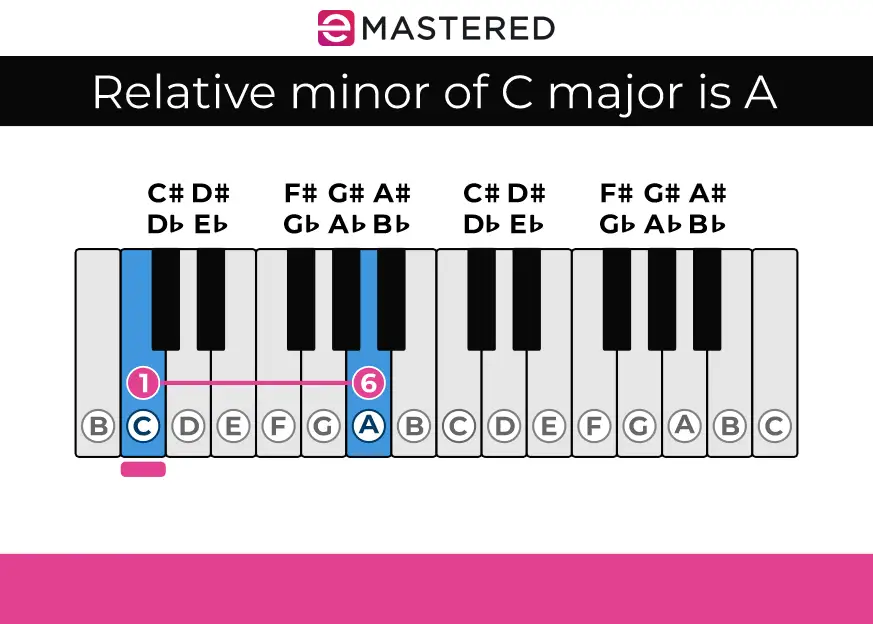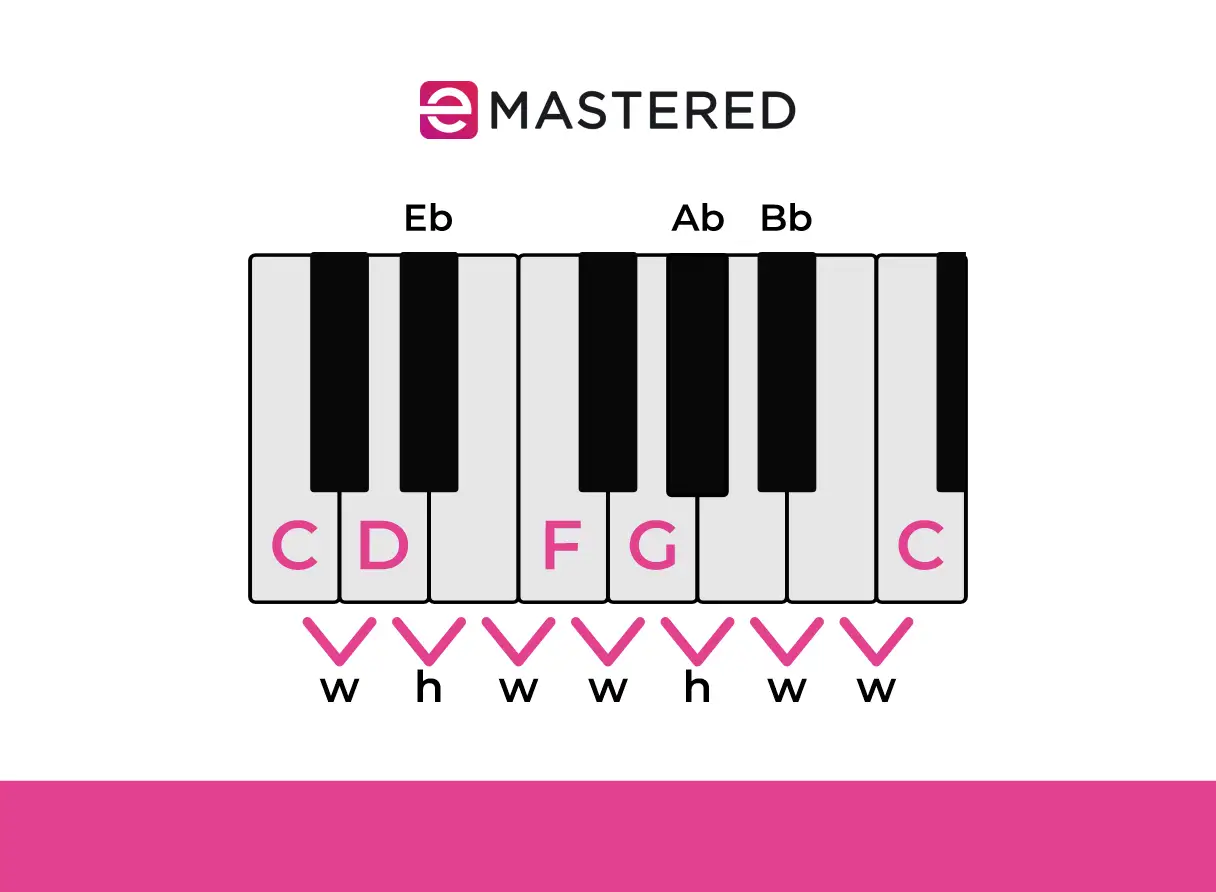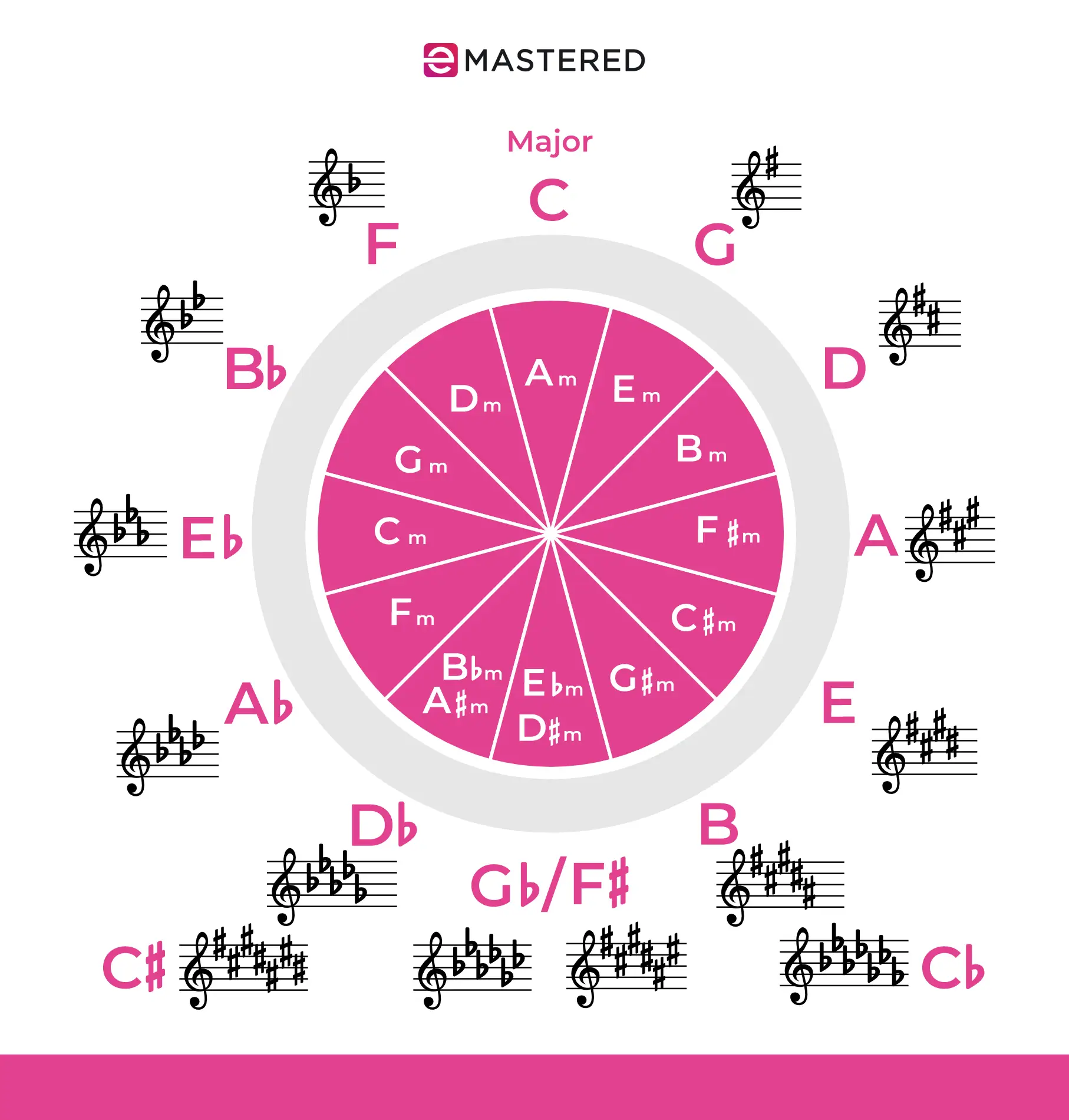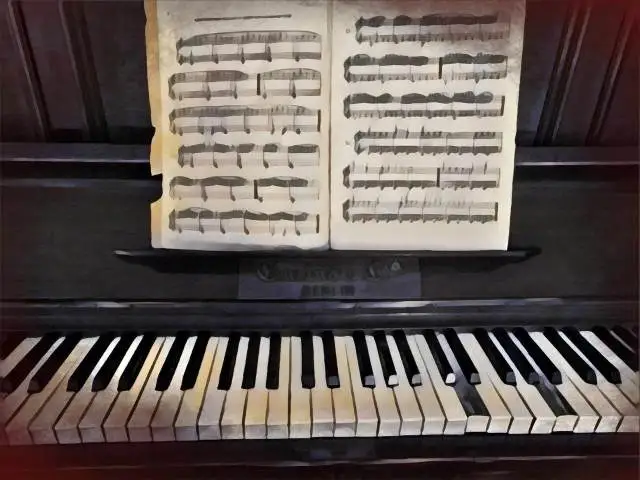Songwriting is about turning words and melodies into feelings. As such, the emotional palette used by a composer needs to convey all sorts of sentiments, from the brightest to the darkest ones.
Minor keys are responsible for the latter category. While capable of evoking a diverse set of emotions, minor scales are usually associated with sadness and thoughtfulness, and songwriters have used them to enhance the mood and atmosphere of their music in countless ways.
Today, we’ll discuss the relative minor, which is the secret to unlocking the power of the minor scales and applying them to your songs. We’ll also analyze the relationship between major and minor scales, and find out how to find the relative minor key in all circumstances.
The Simplest Possible Definition of Relative Minor
The relative minor is a minor scale that has the same notes as a major scale but starts on a different root note.
Every major scale has a relative minor, and they’re linked by having the same key signature. The only difference between a major scale and its relative minor is the starting point, called tonic.
The easiest example is the relative minor of C major, which is A minor. Both scales use exactly the same notes (C, D, E, F, G, A, B), but C major starts on C, while A minor starts on A, the sixth scale degree of A.

The Formula for The Natural Minor Scale
Imagine sitting in front of a piano. To find a natural minor scale, you can use the following pattern of whole steps (W) and half steps (H), defining the distance between one note and the next:
W H W W H W W

This formula describes the distance between each note in the scale, whether you’re working in A or B minor scale, or any other key: it works whenever you want to build a natural minor scale.
For example, if you start on A and apply this formula, you’ll arrive at the A natural minor scale: A, B, C, D, E, F, G.
The natural minor scale has three specific intervals in which it differs from its major counterpart: the third, sixth, and seventh notes are flattened in the natural minor.
If you don’t know what sharp or flat means, we need to delve into the topic of key signatures.
Key Signatures: Sharps (♯) and Flats (♭)
Sharp notes are one semitone higher than the natural note. Flat notes are one semitone lower than the natural note.
Because relative keys share the same set of notes, they also share the same key signature. For example, the key signature for both G major and its relative minor, E minor, contains an F#.
To find the relative minor scale of any major key, you can simply move down three semitones from the root note of the major key.
For instance, since the key of C major scale has no sharps or flats, its relative minor (A minor) doesn’t have them either.
The Circle of Fifths

The Circle of Fifths is the best way to visualize the relationship between relative major and relative minor scales.
In the image above, you’ll notice that each major key is paired with its relative minor directly below it. These two keys share all the same notes and have the same key signature, and you can find every relative minor by simply moving down three semitones. In the same way, every minor key has a relative major, so you can use the same system to find a relative major scale.
How do you use this knowledge?
This pattern makes it easier to move between related keys to create harmonic progressions that sound natural. Moving between major and minor keys will add diversity to your compositions and enhance their emotional impact.
Variations Of the Minor Scale
Harmonic Minor
You create this scale by raising the seventh note of the natural minor scale by a half step, which usually gives you a more dramatic and classical atmosphere.
In A minor, for example, the harmonic minor would be A, B, C, D, E, F, G#.
Melodic Minor
This minor scale raises both the sixth and seventh notes when ascending but goes back to the natural minor when descending, creating a more diverse and engaging melodic line.
Minor Modes
These are the modes derived from the minor scale. The most notable minor modes are Dorian, Phrygian, and Aeolian (which is the same as the natural minor).
Examples
House of the Rising Sun – The Animals : A minor scale.
Losing My Religion – R.E.M. : D minor scale.
Fallin’ – Alicia Keys : E minor scale.
Heart-Shaped Box – Nirvana : F# minor scale.
California Dreamin’ – The Mamas & The Papas : A minor scale.
No Scrubs – TLC : C# minor scale.
Final Thoughts
I hope this guide will help you expand your sonic palette and add more diversity to your songwriting. The beauty of minor scales is that they allow you to guide the listener through an emotional journey of ups and downs, mirroring life experiences in ways no major scale can express.
Have fun, and stay creative!





